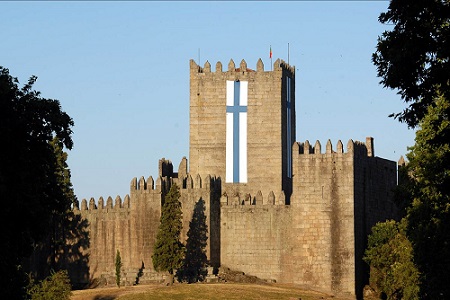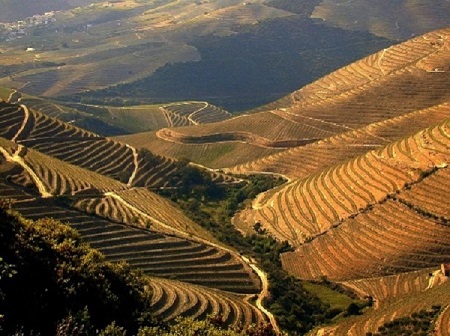Field trips have to be arranged with a travel agency Caravela. Please click on the link to check the list of approved field trips and prices.
SOCIAL PROGRAMME 2nd WECH2014 1.pdf
Attention: The visit to Citânia de Briteiros is up to 40 people. The other visits will hold up to 50 people.
For the boat trip to Douro Cruise a second visit can be prepared. The deadline for inscriptions is until 15 June.
The visit to Marvão was canceled.
To make your reservation, please complete the form below and send it to the agency.
Contacts:
Travel Agency Caravela
Rua Francisco Sanches, 47
4704-530 Braga - Portugal
T + 351 253 200 500 | F + 351 253 200 509
www.caravela.pt
grupos@caravela.pt
Guimarães

Guimarães is located in the north-western part of Portugal, 40 minutes away from Porto international airport. It is, nowadays, with a population of about 60 000 habitants, one of the most important historical cities in the country having been declared World Heritage Site in 2001 by UNESCO. Its many monuments and precious historical centre are associated with the past where the city played a major role in Portuguese history as the cradle of the nation.
Guimarães was designated the European Cultural Capital of 2012 and was elected by the New York Times as one of the top destinations to visit in 2011. Guimarães is 40 minutes away from Porto and both cities are listed in the top ten World destinations for Lonely Planet Guide in 2012.
Port wine cellars - a visit with history 
Port wineis produced from grapes grown in the Douro valley. Wine companies age the winesthey produce in the Demarcated Region of the Douro in cellars (caves), in old wooden barrels, on the left bank of the river, opposite to Porto city (WorldHeritage site). These companies have guided tours and tastings of differentvarieties of the Port wine, where you can learn about its history. Once youstep outside, you will look at the Rabelo boats on the Douro River withdifferent eyes. These boats once brought the wine from the Alto Douro wineregion to Porto. It is a history of centuries andtraditionspreserved in this particular environment. Visit acellar and enjoy a glass of one of the most appreciated wines in the world.
Peneda Geres National Park - a long history of human habitation

In northern Portugal along the Spanish border,Peneda Geres is a lovely jumble of regenerating oak forests, plateau peat bogs,green valleys, and 300-million-year-old granite heights. Established in 1971, the National Park Peneda-Gerês, Portugal’s first and unique important nationalpark, has helped to preserve a unique set of eco-systems. Some of Europe’s very few wolves prowl the park, as do foxes, wild boars, ibex, anddeer. Peneda Geres is also home to otters, fish, frogs, salamanders, 147different bird species (many migratory) and 15 bat species—10 of which areendangered. Thispart of the Iberian Peninsula has an ancient history of human habitation, asevidenced by megalithic stone tombs dating to the third century, Celticfortifications dotting the hilltops, and a well-preserved first-century Romanroad that crosses the park. Castles like Castro Laboreiro (tenth century) andCastelo do Lindoso (12th century), and monasteries like Santa Maria dos Pitões(ninth century) are enduring relics of medieval times. Old shepherd trailsprovide hiking access to the park and can be linked to make multiday treks. On this field trip we will have the opportunity to visit some iconic sites in the park.
Citânia de Briteiros
.jpg)
Citâniade Briteiros is one of the most expressive proto-historical fortified towns in theIberian Peninsula, both for its magnitude, and the monumentality of itsramparts, urbanism and architecture. On the other hand, it is also one of theparadigmatic sites of the History of the Portuguese and Peninsular Archaeology.Its study began in 1874, when Francisco Martins Sarmento (1833-1899) led thefirst campaign of archaeological works. In the following years, he continued todiscover remains, so he decided to buy the lands where the oppidum was settled, in an unprecedented gesture in Portugal. Inthe 20th century, the campaigns of excavation or restoration wererestarted by several archaeologists. Mário Cardozo stands out among thesearchaeologists, and was the President of the Society to whom Martins Sarmentobequeathed his name, his archaeological sites, the library, the manuscripts,and his houses in Guimarães and Briteiros (the Ponte Estate).
As a result of the consecutive archaeological works, a large area ofremains is visible today, both on the highest terrace (acropolis), and in the eastern slope. Despite the studies alreadycarried out, the subsoil of the hillfort still hides many secrets and valuablescientific information. The initial phase of use of this promontory backs tothe end of the Neolithic and Chalcolithic, when several panels with rock artwere engraved in the granite boulders of the eastern slope. As an habitat, thesettling of this site can be dated to the beginning of the first millennium BC,and it was part of a period designated as Atlantic Bronze Age. However, itsgolden phase was between the 2nd century BC and the beginning of theChristian Era. Therefore, it was still inhabited after the integration of thePeninsular Northwest in the Roman Empire during the 1st and 2nd centuries AD.In the 10th century, a small christian hermitage was built in the acropolis,among the remains of the old settlement. The remains of the oppidum, its subsoil, and the collectedartifacts are therefore proof of millennia of History. Different artifacts thattestify this occupation can be seen at the Cultura Castreja Museum, inBriteiros.
more informationCitânia de Briteiros_English.pdf
Alto Douro Wine Region - a boat trip 
Alto Douro is a region centered on the Douro River in NE Portugal, located some distance up stream from Porto city, sheltered by mountain ranges from coastal influencewhere the geology played a major rolein the evolution of the landscape.
The AltoDouro Region (World Heritage site) has been producing wine for some 2,000 yearsand its landscape has been moulded by human activities. The components of thelandscape are representative of the full range of activities association withwinemaking - terraces, quintas (wine-producing farm complexes),villages, chapels and roads. The terraces, by blending into infinity with thecurves of the countryside, endow this property with its unique character. The culturallandscape is an outstanding example of a traditional European wine-producingregion, reflecting the evolution of this human activity over time. On this visit we will goup the river Douro and watchthe fantastic scenery crafted by man in the form of terraces.